
IRIS login | Reed College home Volume 92, No. 1: March 2013
Pathogenius
Reedies who {cure, fight, prevent} disease
Edited by Chris Lydgate ’90
Illustrations by David Sparshott
At first glance, Reed would seem to be an unlikely incubator for medical research. Unattached to a medical school or nursing program, its focus on liberal arts and sciences might appear rather remote from the pressing issues of medicine. What does Aristophanes have to do with astrocytes? What does Plato say about peptides?
Turns out the answer is: plenty. In fact, approximately 1,242, or roughly 8%, of our alumni are employed in health care and hundreds more are directly involved in biomedical research. In this issue, we decided to highlight a small fraction of the amazing work that Reed and Reedies have produced in this field. From the mechanics of multiple sclerosis to the role of zinc to the development of cheaper anti-malarial drugs, you’ll find Reedies at the frontier of human knowledge, demonstrating (if any proof were needed) the vital link between the liberal arts and sciences and the healing arts and sciences.

YOU MOVE ME
Mary McMillan [reconstruction aide 1918–19] pioneered the use of physical therapy in the US and was the founding president of the Women's Physical Therapeutic Association (later the American Physiotherapy Association).
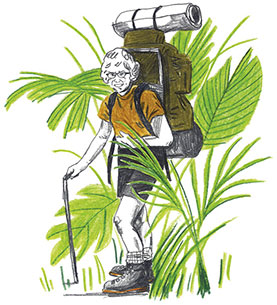
VIRUS HUNTER
Renowned bacteriologist Calista Eliot Causey ’20 spent decades identifying deadly pathogens in the jungles of Brazil and Nigeria with her husband (and former student) Ottis. Discovered nearly 50 new viruses.
SPACE DOCTOR
Flight surgeon Albert Schwichtenberg ’26 won two Legion of Merit Awards in WW II, directed the medical phase of the first astronaut selection program, and was one of the first doctors to grapple with overcoming the limits of the human body in space.
CHEMOTHERAPIST
In 1942, Yale pharmacologist Louis Goodman ’28 showed that mustard gas—the dreaded WWI chemical weapon—could be used to treat lymphosarcoma, opening the door to the use of chemicals to fight cancer.
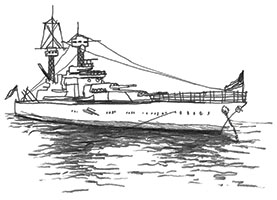
FEEL NO PAIN
Naval surgeon Bud Zeller ’33 served on the battleship U.S.S. Tennessee in WWII, saw action at battles of Leyte Gulf and Surigao Strait, and pioneered the use of hypnosis for post-operative pain relief.
POLIO WARRIOR
Stanford zoologist Jane Graybill Collier Anderson ’37 helped create the first polio vaccine, which later became the foundation for the Salk vaccine. Also carved totem poles.
GODFATHER OF CHINATOWN
Flight surgeon Julius Sue ’38 served with the Flying Tigers during WWII. After the war, he moved to Los Angeles, where he cared for veterans and immigrants, earning him the nickname “the Godfather of Chinatown.”
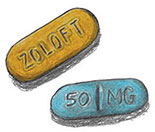
ICEBREAKER
Pfizer biochemist Ken Koe ’45 took a closer look at a discarded molecule and reckoned that with slight modification it could inhibit reuptake of serotonin. Result? Zoloft.
UNDER ARREST
Renowned cardiologist Hank Akiyama ’53 moved to Juneau, Alaska in 1969, and was at the scene of virtually every cardiac arrest that occurred in the city from 1969 until 1982.
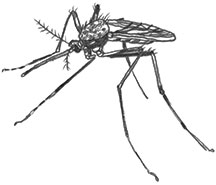
ANOPHELES NOW
Malaria researcher Michael Makler ’58 discovered novel enzyme markers which led to the invention of a portable, inexpensive microscopy instrumentation. With molecular physiologist Robert Piper ’85 developed the first cheap, simple, rapid test for drug-resistant malaria, which was field-tested through the work of Sam Martin ’72, top malaria investigator at the Walter Reed Army Institute of Research in Kenya.
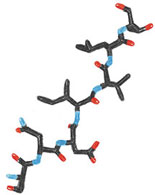
SWITCH HITTER
Harvard biochemist (and ace violinist) Mark Ptashne ’61 originated “ball and stick” model of transcription factors and conducts research on the problem of how genes turn off and on.
TUMORMONGER
Yale biophysicist Don Engelman ’62 performs research on how peptides can target—and destroy—tumors.
ANCIENT SCOURGE
Robert Gelber ’63 is one of the world’s leading experts on Hansen’s Disease (aka leprosy) and has published more than 120 papers on the care and treatment of patients afflicted by this ancient and stigmatized illness.
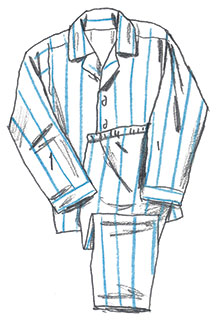
ADVOCATE
Psychologist Susan Crawford Salasin ’64 was the victim of a violent crime at age 16. She went on to become an expert in trauma and now directs the Trauma and Trauma-Informed Care Program at SAMHSA.
FOAM FOE
Chemist and mountaineer Arlene Blum ’66 has led the charge against the use of carcinogenic flame-retardants in pyjamas, cushions, and furniture. Also led an all-women's team to the peak of Annapurna.
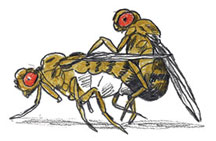
DOUBLESEX
Geneticist Bruce Baker ’66 discovered the doublesex gene, which plays a key role in determining the sex of fruit flies, and has made important contributions to understanding the genetic basis of courtship behavior.
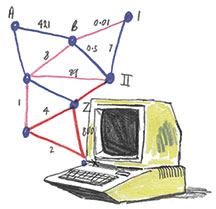
MAPPING THE EPIDEMIC
Computer scientist Richard Crandall ’69 devised fiendishly complex algorithms to predict the propagation of Asian flu—and other infectious diseases—using Census data.
OUT OF THE DARKNESS
Ophthalmologist Marc Lieberman ’70 founded the Tibet Vision Project, which trains Tibetan doctors to perform surgery to restore sight in the region’s remotest and most impoverished hinterlands.
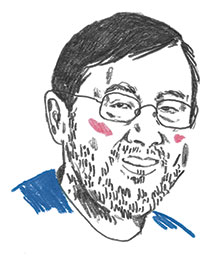
DEFYING PARALYSIS
In 1990, neurosurgeon Wise Young ’71 established the first effective therapy for spinal-cord injury, proving that such injury need not be irreversible. He is now a leader in the development of new therapies for spinal-cord injury and treated actor Christopher Reeve.
TARGETING INTRUDERS
Former DARPA researcher Michael Goldblatt ’74 is developing drugs that combat influenza, respiratory viruses, and HIV through a process known as random homozygous gene perturbation.
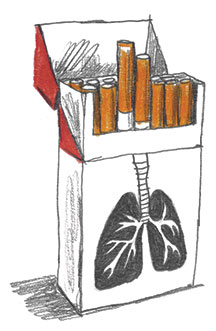
BREATHE EASY
Epidemiologist and mathematician Chris Amos ’80 identified genetic mutations that make some smokers more susceptible to lung cancer than others.
COMPOUND INTEREST
Roger Tung ’81 co-invented two key HIV protease inhibitors that became commercial drugs, Agenerase and Lexiva, plus various other compounds to treat hepatitis and cystic fibrosis. He is now working on compounds based on deuterium.
BREAKING THE CHAIN
Both a sociologist and a statistician, Martina Morris ’80 invented a new model of HIV transmission in sub-Saharan Africa with dramatic implications for prevention
RASH DECISION
Chemist Rebecca Braslau ’81 developed a spray that makes urushiol—the toxic oil in poison ivy, poison oak, and poison sumac—glow in ultraviolet light. Disco parties are now mandatory for backpackers.
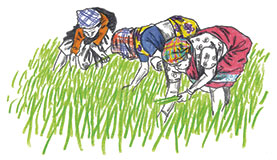
GRAIN OF TRUTH
Genetic engineer Pamela Ronald ’82 has developed a strain of flood-resistant rice that could prevent famine in flood-prone areas of the globe.
FIRING SQUAD
Renowned neuroscientist Gina Turrigiano ’84 introduced the theory of “synaptic scaling” to explain how neural circuits adapt to changes in the brain.
MOLECULAR ASSASSIN
A professor at UC Berkeley and UCSF, chemist Kevan Shokat ’86 pioneered the use of kinases, special enzymes that govern cellular activity, to attack cancer cells.
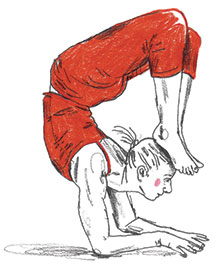
PRICK YOUR EARS
Regina Cugnini Dehen ’87 oversees clinical faculty at the Oregon College of Oriental Medicine, where she specializes in complementary and alternative medicine, reproductive health, and research.
Vertical Integrator
Must allopathic and alternative medicine forever be in conflict? Lorenzo Cohen ’87 spearheads the use of acupuncture and yoga for cancer patients undergoing radiotherapy at the University of Texas M.D. Anderson Cancer Center.
PLURIPOTENTATE
UC Davis researcher Paul Knoepfler ’89 is probing the mystery of pluripotency (ie the ability of certain cells to develop into different kinds of cells) and why the machinery that controls it goes haywire in cancer.
SOUND IDEA
Veterans Affairs otolaryngologist Erick Gallun ’94 researches the effects of aging, hearing loss, and traumatic brain injury on perception and cognition.
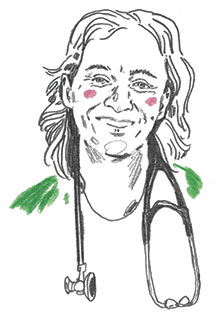
WORLDWIDE WEBB
Physician Kinari Webb ’95 established a clinic in a remote area of Borneo where the destruction of rainforest threatens both the ecosystem and human health. Her clinic treats local villagers and helps them fight illegal logging.
MECHANICAL ADVANTAGE
Half-physicist, half-biologist, Jan Liphardt ’96 is a leader in the field of mechanobiology. His lab at UC Berkeley investigates how mechanical forces affect proteins, cells, and tissues, with profound implications for understanding cancer.
MARKING THE TRANSCRIPT
A chemical biologist at the Broad Institute, Angela Koehler ’97 investigates--with so-called “small-molecule probes”--how to disrupt the transcription factors that run amok in cancer cells.
ROLE MODEL
Neal Miller ’97 is a leader in the field of applied behavior analysis, focusing on how to teach people with autism better skills in social interaction, communication, and play.
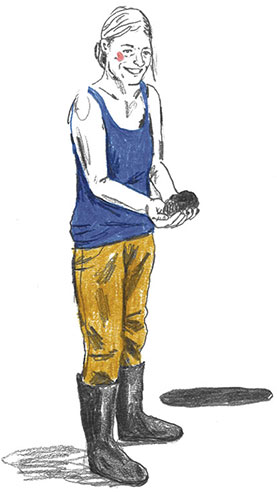
BLACK GOLD
Many parts of Haiti suffer from poor sanitation and depleted soil. Sasha Kramer ’99 leads a non-profit that installs composting toilets that stop the spread of disease while producing fertilizer.
GENE GENIE
UCSF biochemist JJ Miranda ’01 probes the inner structure of viral genomes to understand better their role in causing cancer.
STARVE A FEVER
Kristie Miller Keeney ’01 studies the metabolic adaptation of bacterial pathogens at the University of British Columbia.
DIPLOMATIC IMMUNITY
UCSF postdoc Nancy Van Prooyen ’03 investigates how the leukemia virus hijacks T-cells, which play a critical role in the immune system.
CLEVER WHEEZE
Jonathan Rupp ’04 studies the host factors involved in the viral RNA synthesis of influenza at the University of Alaska.
TRAFFIC COP
Mike Hoppa ’04 investigates the mechanisms of neutrotransmission and how they malfunction in seizures, schizophrenia, and autism at the Weill Cornell Medical College.
SINISTER CHAPERONE
University of Washington researcher Anna Groat-Carmona ’06 investigates how HIV hoodwinks host proteins to chaperone its own replication.
HOT FLASH
David Rasmussen ’07 is researching the evolution of the Dengue virus and other RNA viruses as a population biologist at Duke.
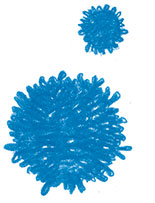
STOPPING A KILLER
Melissa Zarr ’08 is investigating combination antiretroviral therapies for HIV at Johns Hopkins.
INTRUDER ALERT
Jeannette Tenthorey ’09 is studying how organisms sense the presence of pathogenic bacteria at UC Berkeley.
HUNGRY FOR MORE
My Linh Nguyen ’09 works on obesity and feeding regulation at Oregon Health and Science University.
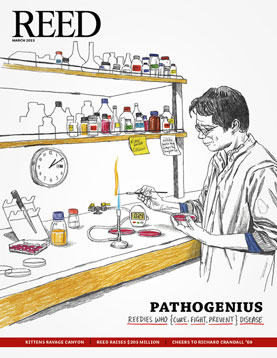
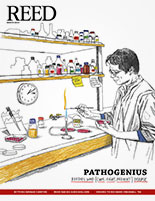

LATEST COMMENTS
steve-jobs-1976 I knew Steve Jobs when he was on the second floor of Quincy. (Fall...
Utnapishtim - 2 weeks ago
Prof. Mason Drukman [political science 1964–70] This is gold, pure gold. God bless, Prof. Drukman.
puredog - 1 month ago
virginia-davis-1965 Such a good friend & compatriot in the day of Satyricon...
czarchasm - 4 months ago
John Peara Baba 1990 John died of a broken heart from losing his mom and then his...
kodachrome - 7 months ago
Carol Sawyer 1962 Who wrote this obit? I'm writing something about Carol Sawyer...
MsLaurie Pepper - 8 months ago
William W. Wissman MAT 1969 ...and THREE sisters. Sabra, the oldest, Mary, the middle, and...
riclf - 10 months ago